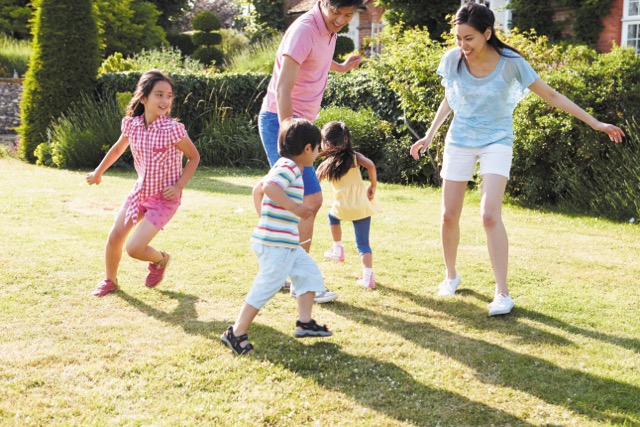Editors Note: The 2016 AHKA Report Card on Report Card on Physical Activity for Children and Young People has been released and it’s not good news for Australia. Parents’ Voice will be meeting with AHKA and other health bodies in late November 2016 and we will update you on how we can work together to get Australia’s kids moving!
Who are Active Healthy Kids Australia?
Leading the Report Card initiative is Active Healthy Kids Australia (AHKA), a collaboration of physical activity researchers across Australia who have a vested interest in increasing the physical activity levels of all Australian children and young people.
Increasing physical activity participation is the ultimate purpose of AHKA, and the vehicle to drive this change is the AHKA Report Card on Physical Activity for Children and Young People. The Report Card uses the best available evidence to assign grades to physical activity indicators and provides a national snap shot of children’s physical activity in Australia.
In 2014 AHKA produced the first Australian Physical Activity Report Card. This was followed by AHKA Progress Report Card on Active Transport in 2015. Both reports can be accessed from the AHKA website.
What did the Report Cards find?
In 2014, Australian kids scored an alarming D- in the area of overall physical activity when the inaugural Report Card on Physical Activity for Children and Young People was released by Active Healthy Kids Australia. With only one in five children meeting the national physical activity guidelines, over two thirds engaging in recreational screen use for more than 2 hours a day and with the launch of the latest Report Card approaching, we ask the question, what can we do to improve this grade?
The key functions of the AHKA Report Card are: to inform policy changes and decision-making across various sectors with the aim of increasing physical activity participation; to highlight where more research is needed to better understand the physical activity of Australian children and young people; and ultimately to encourage all Australians to make changes in their lives to promote, facilitate and model positive lifestyle behaviours of increased physical activity participation and reduce sedentary behaviours among the children and young people of today and tomorrow.
What can parents/families can do to increase the activity levels of their children?
With the knowledge that inactive kids are likely to become inactive adults, it is vital that we look at incorporating simple things every day that will increase the amount of physical activity our kids engage in.
As the 2014 Report Card outlines, in addition to organised sport, there are a number of ways to incorporate physical activity into your everyday lives and it can be done so at different time throughout the day. Engaging in regular active transport such as walking or riding to and from school or work is a great example of this. If you live too far from school for your children to walk, park the car 10-minutes away and get out and walk the rest of the way.
Limiting the time your family watches television, uses a computer and plays electronic games, e.g. before or after school and removing screens from bedrooms are great ways to reduce the amount of sedentary recreation time. Instead, screen time can be replaced with family physical activities such as making time to play together, going on bike rides, going to the local park and playing with the family pet. Creating opportunities to be active should be a priority to all families as it not only sets a positive example but it’s a great way to spend quality time together.
Final Thought
In November this year, AHKA will release the next full Report Card which will cover all 12 physical activity indicators (that focus on physical activity behaviours, the settings and sources of influence as well as strategies and investments that impact these behaviours and traits linked with physical activity participation). The AHKA Report Card will be released alongside more than 35 other countries as a part of the Active Healthy Kids Global Alliance. This global launch will provide a benchmark of where Australia sits compared to the rest of the world in regards to the activity levels of Australian children and young people.
Dr Natasha Schranz
Leading this conversation is Dr Natasha Schranz, Active Healthy Kids Australia (AHKA) Co-Chair and Research Fellow from The University of South Australia and the lead investigator behind the AHKA Report Cards. Dr Schranz is passionate about the work she does for AHKA and feels it’s important to highlight the facts and stats about Aussie kids doing less physical activity than they ever have before.
She says “The results from the AHKA Physical Activity Report Cards can, and should start a national conversation about how we can improve the grade and get more kids to move more and sit less.”
Charlotte Vincent
Working alongside Dr Schranz, Charlotte Vincent assists with the business administration for Active Healthy Kids Australia. Charlotte shares the passion of AHKA in the ultimate quest to find effective and innovative ways to improve physical activity levels of Australian Kids.
“It is critical that we address the barriers that are preventing today’s kids from being more physically active in all areas of their daily life.”
Active Healthy Kids Australia Alliance for Research in Exercise, Nutrition and Activity (ARENA) School of Health Sciences University of South Australia





